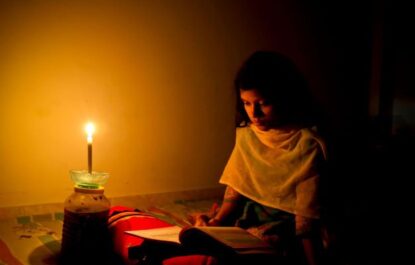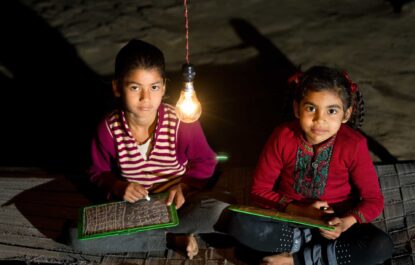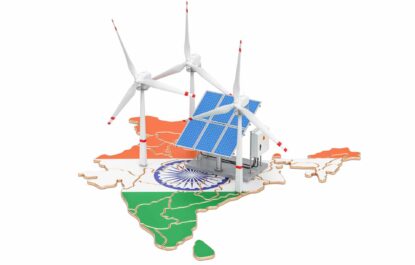Success notwithstanding, several core issues linger. In India, 100% electrification does not mean all houses have access to electricity. If 10% of households and public facilities in a village have power connections, the village is said to be 100% electrified. So, what about the remaining 90%?
Many surveys highlight rural areas’ continuing struggle. Forty-six million households still don’t have an electricity connection. According to a Council of Energy, Environment, and Water Survey, the hinterlands of poorer states like Jharkhand receive an average of 16 hours of power daily. UP and Bihar don’t fare much better, with their rural areas averaging less than 18 hours of reliable power supply. Less than 65% of rural enterprises are connected to the grid, and nearly 40% of grid-connected households remain dissatisfied with DISCOM services.
If India is to achieve its goal of universal electrification by 2030, it must make concerted efforts and effect institutional changes with innovative solutions. Until now, electrification was done by expanding and strengthening the central grid infrastructure. While this has helped, power outages, load shedding, and voltage fluctuations continue to plague remote villages. The unpredictability of power supply stemming from poor infrastructure and the reluctance of DISCOMs to make critical technology investments has stymied rural economic growth.
India’s vast renewable energy potential is yet untapped. India must democratize its energy sector by decentralizing it through renewable microgrids to attain inclusivity. This inclusivity in generation and distribution will address the rural-urban divide and wean India away from conventional energy sources.
Impact of microgrids in the rural areas of India
Baripatha, on the outskirts of Bhubaneswar in Odisha, is home to 350 residents (over 60 households). The nondescript village became the toast of the town a few years ago when it became the first village in Odisha to be fully electrified with a solar-powered microgrid. The small community-owned microgrid is based on a low-cost model that requires minimal maintenance and upkeep.
The remote village could never be connected to the central grid due to its minuscule scale, but a solar energy microgrid led to a reliable energy supply. The microgrid supplies enough energy to each household to power several home lighting systems that double as charging stations for mobiles and other devices. The microgrid powers streetlights, a community LED TV set, a set-top box, and an irrigation pump. Albeit a small sample size, the story of Baripatha is representative of how renewable microgrids can bring power to India’s remote areas.
One of the critical challenges to electrification in India is energy distribution. Conventionally, electrifying a village meant simply connecting it to the nearest location with a power supply. Simple as it sounds, it burdened an already stressed supply infrastructure, resulting in frequent breakdowns and technical snags. The added transmission lines also require extra maintenance, without which transmission and distribution losses will mount. These issues make connecting remote hamlets to the central grid an imprudent and financially unviable move.
On the other hand, setting up autonomous microgrids in these villages enables self-sufficiency, aiding the villagers in handling community-based projects. Moreover, microgrids don’t require a central grid connection, eliminating the need to spend public money on supply infrastructure. Transmission losses are minimal, and maintenance costs are manageable. Microgrids make electricity supply more reliable with fewer power outages and voltage fluctuations.
A case study published in the INSEE Journal further highlighted the advantages of solar microgrids in rural areas. Set up in Lakshmipura-Jharla, Rajasthan, the study evaluated the benefits of rural electrification through microgrids. It found that reliable electricity had many benefits, from making public spaces safer and offering students more time to study to expanding consumption possibilities and new demands.
As India pushes for universal electrification and 500GW renewable energy production by 2030, it must tap into the potential of renewable microgrids. They make rural electrification financially viable, require little intervention after the initial setup, and ensure a greener future.













